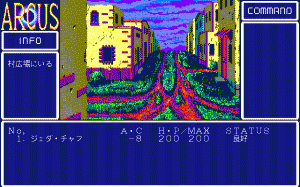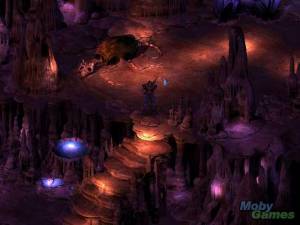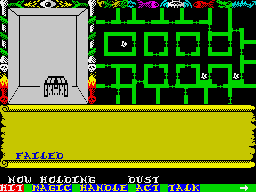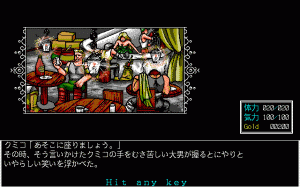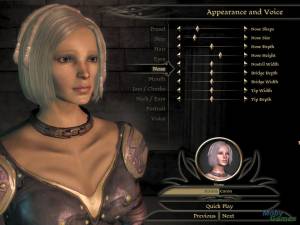Game Classification
Rings of Zilfin Strategic Simulations (U.S.A.), Strategic Simulations (U.S.A.), 1986
Classification
VIDEO GAMEKeywords
Market
This title is used by the following domains:- Entertainment
Audience
This title targets the following audience:Age : 12 to 16 years old / 17 to 25 years old
General Public
Gameplay
The gameplay of this title is Game-based(designed with stated goals)
The core of gameplay is defined by the rules below:
Similar games
 Rings of Zilfin is an unusual, but relatively unknown early fantasy solo RPG by Ali N. Atabek, who went on to create the Magic Candle series. It was meant for beginners to computer RPGs, featuring no character creation, simple game play and movie-like cut scenes, concentrating more on atmosphere than on character stats.
Rings of Zilfin is an unusual, but relatively unknown early fantasy solo RPG by Ali N. Atabek, who went on to create the Magic Candle series. It was meant for beginners to computer RPGs, featuring no character creation, simple game play and movie-like cut scenes, concentrating more on atmosphere than on character stats.
The background: Long ago, the Zilfins (mighty wizards) established an enchanted realm of peace and property in Batiniq. They created two rings of power which, worn together, made the wearer invincible. Unfortunately, the evil necromancer Lord Dragos has found one of these rings and has come to great power. The only hope to prevent him finding the second one is Reis, a young boy possessing some innate magical ability. In the introduction, Reis barely escapes Dragos' minions, and leaves his home village.
After "character creation" (giving Reis an optional other name and selecting one of 10 difficulty levels, which affect your starting resources), you start your quest to find the Zilfins and their second ring and to develop your magical abilities on the way.
The game features a huge world with over 100 villages and towns in four kingdoms. Each town has up to three buildings you can enter -- shops with items to buy and sell, inns to eat and drink and rest, amongst others --, and also people you can talk to (careful, some are shape shifters!), sometimes offering valuable information. There are also a few dungeons and some caves to explore, but most of the game is played in towns or travelling between them.
When leaving a location, the game shows a map where you can select the direction off your next target. While travelling between locations, the game shows an interesting side scrolling view. You can set your walking speed, which influences your fatigue, and stop when you encounter pools or plants. Pools can be drunk from (may have positive or negative effects), and the plants can be gathered and eaten later. Some plants have special effects, there are "magic mushrooms" and some other healing and boosting plants. This plant system is one of the things that distinguishes this game.
While travelling, you may also encounter Lord Dragos' minions, which results in some pseudo-real time combat. The monsters are often quite unusual, like Barvils (mutated bats), Basurs (flying skulls) or Zumagin (the death ray demon). Protected by different armors, you can attack with arrows or swords or by casting spells. The game makes a difference between ground-based and air-bourne monsters -- the latter cannot be attacked with swords, of course.
The spell system is quite simple. There are three spell levels: Apprentice, Master and Grand Master, each one lets you know more and more powerful spells. Casting a spell always costs some fatigue, and you have to prepare the spell first. The game is highly non-linear and there are several approaches possible. For example, it is possible to make money by trading, buying cheap items in one town and selling them in another town -- which, in fact, is the only way to make money in the beginning. All commands are given by pressing keys, like "G" for getting things or "C" for casting spells. The game may be saved when exiting towns and loaded at the main menu. [source:mobygames]
Distribution : Retail - Commercial
Platform(s) : Apple II - Atari ST - Commodore 64 - PC (Dos)
 Français
Français English
English






